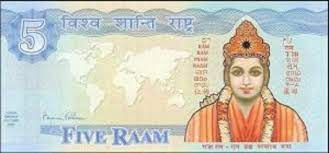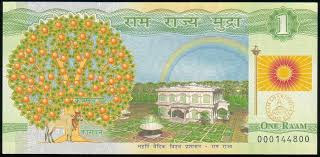Who are the Most influential people pertaining to cryptocurrency?
1. 10 most
influential people in cryptocurrency
2. Bitcoin currency
use cases
3. Haseeb Qureshi: A
Cryptocurrency Entrepreneur's Guide
4. Manage by law or
by code?
5. The grim future
of the network and the hope of a new type of decentralized Internet
The 100 most influential people in cryptocurrency
CryptoWeekly's "100 Most Influential and Most
Influential People in Cryptocurrency" column, this list will certainly
have some subjective, but very interesting list. The following are the top ten
characters. If you want to see the full list of 11-100, you can view the
original text to see if your favorite idol has been selected.
At No.1 @cz_binance CZ is the founder and
CEO of Binance
This is currently the fastest growing cryptocurrency exchange
in the world. CZ was previously the CTO of OKCoin and the developer of
Blockchain.info. He has been in the crypto field for many years, and this year
he entered the list of the richest people in the Forbes crypto field.
NO.2 Brian Armstrong @brian_armstrong Brian is the co-founder
and CEO of Coinbase
One of the world's largest cryptocurrency exchanges, and
it is also providing a wide range of products and services for institutional
investors. He has starred in the 2014 film "The Rise of Bitcoin" and
frequently speaks at conferences on the power of Bitcoin and cryptocurrencies.
NO.3 Vitalik Buterin @VitalikButerin Vitalik
He is known as the
godfather of Ethereum, and he is one of the key programmers who pushed the
platform forward. This year, Vitalik has also begun to focus on making ICOs
more secure-his recently released DAICO concept has begun to get attention as
it is a more secure way to run ICOs.
NO.4 Tyler Winklevoss @TylerWinklevoss
Taylor is the head of
Winklevoss Capital and the co-founder and CEO of the next-generation digital
asset exchange Gemini. Winklevoss is the world's first Bitcoin billionaire, and
this year he helped launch the Gemini dollar, a stablecoin designed to provide
liquidity to cryptocurrency traders .
NO.5 Brad Garlinghouse @bgarlinghouse
Brad is now the CEO of
crypto payment startup Ripple, which launched the xCurrent international
payment agreement earlier this year. He was previously the CEO of file-sharing
startup Hightail and an active angel investor, and has completed more than 40
startup investments to date.
NO.6 Roger Weir @rogerkver
Roger was one of the earliest
investors in the first batch of Bitcoin startups. He is now heavily involved in
Bitcoin Cash, a hard fork of the original Bitcoin protocol, designed to be used
as cash (while addressing some of the key performance issues that plagued
Bitcoin's core).
NO.7 Barry Silbert @barrysilbert
Barry is the founder and CEO
of the Digital Currency Group, a digital currency incubator and investment fund
that has been in operation for several years. He is also the CEO of Grayscale
Investments, a digital currency investment fund that manages the Bitcoin
Investment Trust, a private trust dedicated to investing in Bitcoin.
NO.8 Wu Jihan @jihanwu
Wu Jihan is one of the co-founders of
Bitmain, the world's largest cryptocurrency mining company. He has an estimated
net worth of more than $ 2B and is one of the most influential members of the
blockchain industry. Before joining Bitmain, Wu Jihan had a university
economics degree from Peking University.
NO.9 Michael Novogratz @novogratz
Michael was a hedge fund
manager at Fortress Investment Group and is now the CEO of crypto investment
firm Galaxy Investment Partners. He had previously forecast a target price of $
20,000 for cryptocurrency next year.
NO.10 Adam Baker @ adam3us
Adam is a well-known cryptographer
and inventor, known for inventing hashcash (a proof of work system), which is
used by many email providers to fight spam. He is now the CEO of Blockstream, a
startup dedicated to developing sidechains and other applications for the
crypto ecosystem.
Bitcoin currency use case
Yesterday, David Hoffman's "Ethereum Currency
Model" was shared. About Ethereum's Money story, this year's
recommendation is Ben Kaufman's Money use case for Bitcoin, which mainly
explains and analyzes Bitcoin from economics. Currency use case.
Bitcoin's monetary properties
In the conclusion of analyzing the monetary attributes of
Bitcoin, we saw how the transition of monetary assets from physical to digital
domains has not only enabled us to achieve unprecedented improvements, but has
also made the monetary attributes of assets highly flexible. Therefore, we can
conclude here that, from the perspective of its "inherent" attributes,
Bitcoin is unprecedentedly superior to all its predecessors.
Bitcoin production
Bitcoin production relies on a purely mathematical system.
This feature provides an objective, universal way to audit the validity of
Bitcoin units and enable fair and open competition in their production.
Bitcoin
production seems to be the most ideal currency production process we may have.
The fact that it is hard money, coupled with its simple and transparent
production process, open and direct competition, and seemingly positive
externalities, makes it significantly better than any of its predecessors. The
second important consideration is usually related to the production process of
money, which is the supply of money.
Supply of Bitcoin
The cap is about 21 million Bitcoin units. This is often
referred to as Bitcoin's "monetary policy" and is implemented by the
economic activity of each participant in the Bitcoin network.
The decentralized
nature of Bitcoin as a peer-to-peer network means that no central entity is authorized
to determine Bitcoin's monetary policy. In view of its actual advantages,
disadvantages and results, the reason for adopting a flexible monetary policy
is very convincing today. This monetary policy has been considered by many to
be the necessity of currency today.
Even before this modern attempt, it did not
even mention its absolutely undisputed failure. Moreover, this argument becomes
even weaker when we consider the more than 50 economic collapses caused by
hyperinflation in the last century.
Bitcoin legitimacy
Although the possibility of acting on behalf of the
government seems small in the short or medium term, this choice remains
reasonable in the long run. Bitcoin has become important enough that the
government has the potential to buy it as a substitute for gold, monetize it
for its international monetary affairs, or as a "storage value"
hedging tool.
Cognitive barriers to Bitcoin adoption
With more than a century of central bank services, people ’s
general understanding of currency is completely flawed, and even more so in
most academic discussions, they still believe they can use their complex
mathematical models and inflation goals to "Adjust" the economy.
The last crisis of 2008 has shaken trust in the current system, which is correct,
but most of the alternatives available to the public for understanding currency
will only exacerbate the errors of the modern system.
Nowadays, even among many
Bitcoin supporters, sayings such as "money is a statute issued by the
state" or "money is just a common illusion" are only very
common, which only explains the work of explaining Bitcoin and money Wide
range.
Haseeb Qureshi: A Cryptocurrency Entrepreneur's Guide
Former Metastable's Haseeb Qureshi went to Dragonfly to write
the first article for Dragonfly. From the perspective of VC, he founded a
cryptocurrency startup. The article is very detailed. I like him to ask himself
three questions first. be ready. Here are these three questions:
If you are not familiar with cryptocurrency, its culture,
products and industry history, then you should take some time to learn first.
If you are not a technician, then if you want to build
anything of value, you almost always need a technology co-founder. Fighting
cryptocurrencies requires deep technical logging, and the founder's team rarely
gets funding. Of course, the best way to find co-founders is to work at another
startup.
The last question is, why build this startup? Is it for
money? reputation? Or is it because the world needs what you want to build and
you are the only one who can build it?
Startups that make money with little motivation. I don't know
why-it doesn't seem to show the best people. On the other hand, startups eager
to change the world often survive difficult times.
Another interesting piece of advice is the user's problem,
all the great cryptocurrency companies that exist today have built at least
what someone wanted then. These people may be just a small group: crypto punk,
ETHheads, cryptocurrency traders, and more. But don't fall into the trap of
building markets that simply don't exist.
The best way to bet on future trends is to build a small customer
base that you believe will grow. Don't build a customer base that doesn't exist
yet and try to imagine their future preferences. You will build endlessly,
without feedback, and do not know if you are making any progress. For startups,
this is almost purgatory.
In addition to these, he also wrote a series of suggestions
on how to find VC fundraising, how to design the token structure, how to do
marketing, etc. I think this is a must-read lesson for cryptocurrency
entrepreneurs and it is worth recommending.
Manage by law or by code?
This article from Harvard University Press, Primavera De
Filippi and Aaron Wright in "Blockchain and Law: Code Rules" examines
the profound opportunities and legal and even moral challenges that blockchain
technology brings.
With the wider emergence of Bitcoin and blockchain
technology, we are ready to witness a new wave of decentralization and a new
appeal that the world will be ruled by code rules. Blockchain technology will
bring greater personal freedom and liberation, as these early technology
advocates initially desired. Many crypto punk and decentralization advocates
see blockchain technology as a new opportunity. They believe that blockchain
technology is a new means of liberating people from the tyranny of governments
and companies in a way that reminiscent of the early days of the Internet.
But this also brings great problems. Given that blockchain
technology is still largely immature, there is a danger that prematurely
adjusting the technology may prevent new and unexpected ones that have not been
fully explored or discovered. App appears. At the same time, a complete lack of
regulation can also cause problems. Given the lack of a clearly defined
regulatory framework for blockchain-based applications, parties seeking to
deploy the technology may find themselves in a gray area of the law, unable
to know whether what they are doing today is legal and will continue to do so.
The last author's words are worth our repeated thinking in
the process of advancing blockchain and cryptocurrency:
If the blockchain technology is mature, we may need to ask
ourselves if we would rather live in a world where most of our economic
transactions and social interactions are subject to the rule of law, which is
universal, but also more flexible and ambiguous. So it's not perfectly
executable, or do we prefer to succumb to code rules.
Decentralized
blockchain-based applications are likely to free us from the tyranny of
centralized intermediaries and trusted authorities, but the price of this
liberation may be a greater threat-bound by code tyranny.
The grim future of the network and the hope of a new type
of decentralized Internet
The author is a business novelist, but this article is based
on the environment that the market and politics are increasingly controlling
Silicon Valley. It provides some thoughts on how the network will develop in
the next ten years if the worst case happens. The author's writing is more literary
and will continue to entangle the government's anti-censorship,
anti-censorship, and anonymity.
If Urbit or a similar method works, maybe our dark web
digital Frankenstein isn't needed at all. However, this story is unlikely to
have such a happy ending. Get used to the idea of stepping out of the fort
and into a new and hasty new online world. Sometimes this experience can be
frustrating and difficult at times, but I promise it will be more fun and
rewarding than the bland hell network of the fortress.
NB: This article is only for the purpose of disseminating
information and does not represent the position of the source community. The
article does not constitute investment advice. If you need to reprint, be sure
to indicate the original author and source of the article. Some pictures are
from the Internet. We respect copyright. If you have any questions, please
contact us. We will verify and delete them.
[[>>Share on Social Media for Awareness to Help Someone who may be in Need of this Info, Share>> >>












